Beautiful Ancient City Of Pisac In The Sacred Valley, Peru – Incredible Inca Ruins
Ellen Lloyd - AncientPages.com - Ancient city of Pisac in the Sacred Valley, Peru is not as famous as Machu Picchu, but it’s a remarkable place that is not only beautiful but also rich in history and legend.
Structures in the urban sector of the Inca complex at Pisac. Image credit: Leon Petrosyan - CC BY-SA 3.0
Known for its Incan ruins, the city of Pisac, located about 19 miles northeast of Cusco lies atop a hill at the entrance to the valley. The view is fantastic, and it seems that no matter where you stand, you can admire remarkable agriculture terraces that are still in use today.
It is said that in ancient times, the city was guarded at night by pumas.
Why Did Inca Build The City Of Pisac?
Why Pisac was built is not entirely clear. According to the scholar Kim MacQuarrie, Pachacuti erected a number of royal estates to memorialize victories over other ethnic groups. Among these royal estates are Písac (victory over the Cuyos), Ollantaytambo (victory over the Tambos), and Machu Picchu (conquest of the Vilcabamba Valley).
However, there are also historians who suggest Písac was established to protect Cusco from possible attacks from the outside.
The ruins are separated along the ridge into four groups known as P'isaqa, Inti Watana, Qalla Q'asa, and Kinchiraqay. In Quechua, Pisac means “partridge”. Inca tradition dictated building cities in the shape of birds and animals, and as such, Pisac is partridge shaped.
Partridge-shaped structures are related to the spirituality and values that the Incas believed that each human being should develop.
The Pisaq'a residential area in the Inca complex. Image credit: Bcasterline - Public Domain
There are twenty lookout towers of different sizes placed strategically throughout the ruins. Some are massive watchtowers that are placed so that messages could be shouted from one to the other, and there are other towers that were used to store water for the elaborate irrigation system.
The ruins in Pisac contain a group of thirty independent but uniform enclosures, which were probably used as apartments.
Legend Of Princess Inquill (Inkill) Chumpi And The Stone Figure
There are several ancient legends about this beautiful place in the Andean Mountains. One legend tells that a princess called Inkill Chumpi (princess of the Florida belt) owned the entire city. She would marry someone who could build a bridge over the Wilkamayu River (Vilcanota) in a single day.
After learning about this, many young men tried to accomplish what seemed like an impossible task. Asto Rimac, who was a secret lover of the princess owned the lands to the east. When Asto Rimac was started building the bridge, Princess Inkill Chumpi went to invoke the Apus (mountain spirits) to help him.
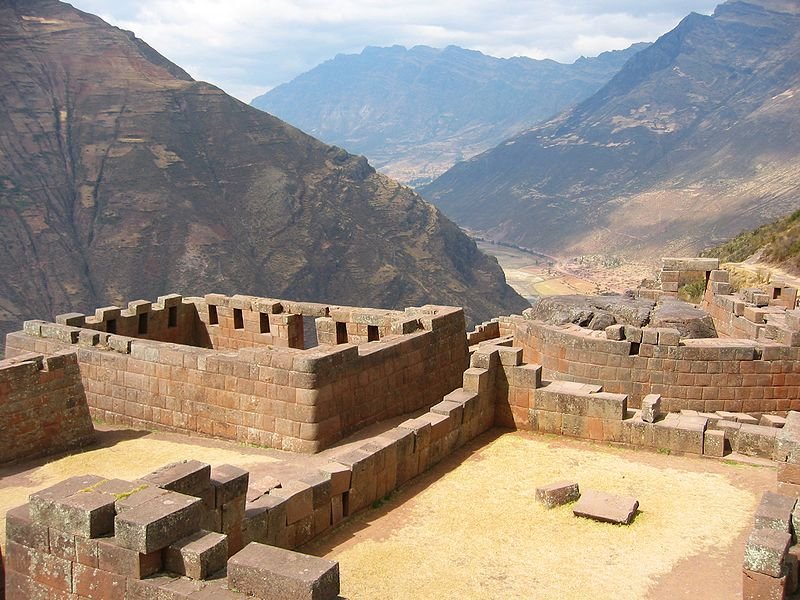 View of the Sacred Valley, Peru, from the Sun Temple (foreground) at Písac. Image credit: Bcasterline - Public Domain
View of the Sacred Valley, Peru, from the Sun Temple (foreground) at Písac. Image credit: Bcasterline - Public Domain
The spirits agreed to help him, but only if she didn’t look at the bridge until it was ready. Just before the bridge was finished, the princess began to hear loud thunders and gave in to the temptation to see what happened and turn to observe; At that moment, the Urubamba river swallowed Asto Rimac, and she was turned to stone, standing, looking towards the valley of Pisac. In the place until today can be seen as the figure of stone.
It is unknown when Inca Písac was built. There are no traces suggesting that Písac was inhabited by any pre-Inca civilization, so it was most likely built no earlier than 1440.
Francisco Pizarro and the Spanish conquerors destroyed Inca Písac in the early 1530s. The modern town of Písac was built in the valley by Viceroy Toledo during the 1570s.
Written by Ellen Lloyd – AncientPages.com
Updated on Oct 14, 2024
Copyright © AncientPages.com All rights reserved. This material may not be published, broadcast, rewritten or redistributed in whole or part without the express written permission of AncientPages.com
Expand for referencesMore From Ancient Pages
-
 Neanderthals Changed Ecosystems 125,000 Years Ago
Archaeology | Dec 16, 2021
Neanderthals Changed Ecosystems 125,000 Years Ago
Archaeology | Dec 16, 2021 -
 Medieval Mystery Of The Booted Man Found In The Thames Mud
Archaeology | Dec 10, 2018
Medieval Mystery Of The Booted Man Found In The Thames Mud
Archaeology | Dec 10, 2018 -
 3.6 Million-Year-Old Rare Skeleton Of Human Ancestor Revealed By Researchers In South Africa
Archaeology | Dec 7, 2017
3.6 Million-Year-Old Rare Skeleton Of Human Ancestor Revealed By Researchers In South Africa
Archaeology | Dec 7, 2017 -
 Did The Plague Of Athens Come From Egypt Or Is It A Myth?
Archaeology | Dec 13, 2023
Did The Plague Of Athens Come From Egypt Or Is It A Myth?
Archaeology | Dec 13, 2023 -
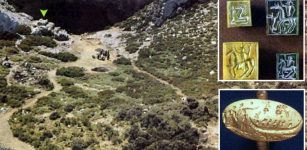 Sophisticated Lenses Of Minoans Discovered In The Sacred Idaion (Ideon) Cave
Civilizations | May 31, 2017
Sophisticated Lenses Of Minoans Discovered In The Sacred Idaion (Ideon) Cave
Civilizations | May 31, 2017 -
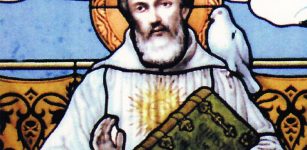 On This Day In History: Irish Saint Columbanus Founder Of Monasteries In Europe Died – On Nov 21, 615
News | Nov 21, 2016
On This Day In History: Irish Saint Columbanus Founder Of Monasteries In Europe Died – On Nov 21, 615
News | Nov 21, 2016 -
 Medieval Ship Discovered Off The West Coast Of Sweden May Have Been Attacked By Pirates
Archaeology | Feb 4, 2022
Medieval Ship Discovered Off The West Coast Of Sweden May Have Been Attacked By Pirates
Archaeology | Feb 4, 2022 -
 Secrets Of The ‘Worlds Of Prav, Nav And Yav’ Revealed – Ancient Slavic Wisdom Confirms The Multiverse Theory
Featured Stories | Oct 6, 2015
Secrets Of The ‘Worlds Of Prav, Nav And Yav’ Revealed – Ancient Slavic Wisdom Confirms The Multiverse Theory
Featured Stories | Oct 6, 2015 -
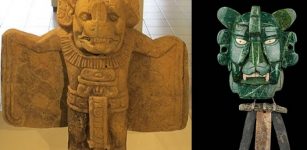 Who Were The Ancient Maya Bat People?
Featured Stories | Jul 13, 2021
Who Were The Ancient Maya Bat People?
Featured Stories | Jul 13, 2021 -
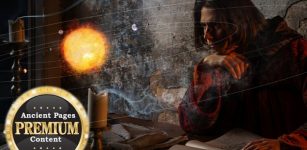 Evidence Ancient Civilizations Had Knowledge About Planets In Our Solar System Thousand Years Ago
Ancient Mysteries | Mar 10, 2021
Evidence Ancient Civilizations Had Knowledge About Planets In Our Solar System Thousand Years Ago
Ancient Mysteries | Mar 10, 2021 -
 The Hittites – Rise And Fall Of An Ancient Powerful Empire
History | Feb 18, 2019
The Hittites – Rise And Fall Of An Ancient Powerful Empire
History | Feb 18, 2019 -
 Millennium Old Dice Found In Vadnagar, Gujarat, India
Archaeology | Apr 25, 2022
Millennium Old Dice Found In Vadnagar, Gujarat, India
Archaeology | Apr 25, 2022 -
 New Entrances To Ancient Underground City In Kayseri, Turkey – Found Accidentally
Archaeology | May 1, 2020
New Entrances To Ancient Underground City In Kayseri, Turkey – Found Accidentally
Archaeology | May 1, 2020 -
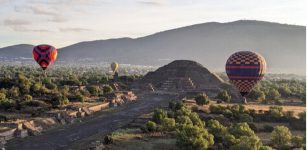 New Clues May Explain Collapse Of Ancient City Teotihuacan In Mexico
Archaeology | Sep 22, 2022
New Clues May Explain Collapse Of Ancient City Teotihuacan In Mexico
Archaeology | Sep 22, 2022 -
 A 1,500-Year-Old Basilica Re-Emerged Due To Withdrawal Of Waters From Lake Iznik
Archaeology | Sep 12, 2020
A 1,500-Year-Old Basilica Re-Emerged Due To Withdrawal Of Waters From Lake Iznik
Archaeology | Sep 12, 2020 -
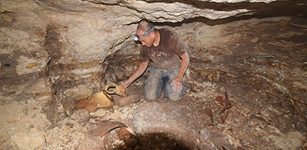 A 2000-Year-Old Jewish Settlement Near Bet Shemesh – Unearthed
Archaeology | Mar 30, 2017
A 2000-Year-Old Jewish Settlement Near Bet Shemesh – Unearthed
Archaeology | Mar 30, 2017 -
 Takshashila: Renowned Learning Center That Attracted Buddhist Masters, Disciples And Students Of The World
Featured Stories | Jul 23, 2016
Takshashila: Renowned Learning Center That Attracted Buddhist Masters, Disciples And Students Of The World
Featured Stories | Jul 23, 2016 -
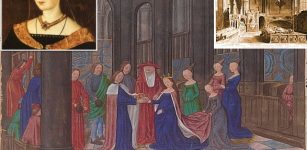 Solving The Mystery Of Westminster Abbey’s Lost Chapel And Disemboweled Saint – New Evidence
Archaeology | Dec 1, 2022
Solving The Mystery Of Westminster Abbey’s Lost Chapel And Disemboweled Saint – New Evidence
Archaeology | Dec 1, 2022 -
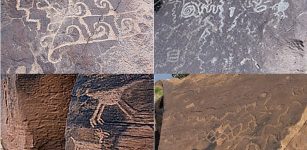 Lyman Lake Petroglyphs And Famous Kokopelli-Flute Player Left By Ancestors Of The Hopi Indians
Civilizations | Nov 26, 2018
Lyman Lake Petroglyphs And Famous Kokopelli-Flute Player Left By Ancestors Of The Hopi Indians
Civilizations | Nov 26, 2018 -
 On This Day In History: Chaldean Account Of The Deluge Translated And Presented For The First Time – On Dec 3, 1872
News | Dec 3, 2016
On This Day In History: Chaldean Account Of The Deluge Translated And Presented For The First Time – On Dec 3, 1872
News | Dec 3, 2016


